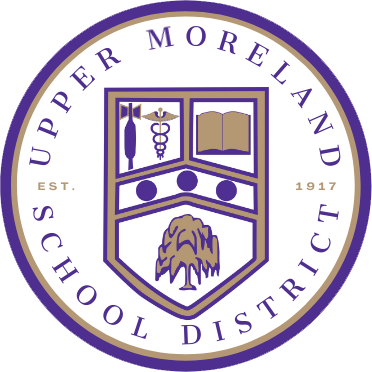Conflict and Issues in Our World Today
Planned Course of Social Studies
Course: Conflict and Issues in Our World Today
National Standards:
NCSS 1: Culture (B, D, E, F, G)
NCSS 2: Time, Continuity, and Change (A-F)
NCSS 3: People, Places and Environment (A, D, E, G, H, I, K)
NCSS 4: Individual Development and Identity (C, E)
NCSS 5: Individual Groups and Institutions (A-H)
NCSS 6: Power, Authority and Governance (A-J)
NCSS 7: Production, Distribution, and Consumption (A-J)
NCSS 8: Science, Technology, and Society (A, C-F)
NCSS 9: Global Connections (A-G)
NCSS 10: Civic Ideals and Practices (A-H, J)
PA Academic Standards:
History:
8.1 Historical Analysis and Skills Development
8.2 Pennsylvania History
8.3 United States History
8.4 World History
Geography:
7.1. Basic Geographic Literacy
7.2. Physical Characteristics of Places and Regions
7.3. Human Characteristics of Places and Regions
7.4. Interactions Between People and the Environment
Economics:
6.1. Scarcity and Choice
6.2. Markets and Economic Systems
6.3. Functions of Government
6.4. Economic Interdependence
6.5. Income, Profit, and Wealth
Civics and Government
5.1. Principles and Documents of Government
5.2. Rights and Responsibilities of Citizenship
5.3. How Government Works
5.4. How International Relationships Function
PA Core - Reading and Writing for History and Social Studies:
8.5 Reading Informational Text
8.6 Writing
Course Description:
The goal of the middle and high school social science program is to develop citizens who will be able to participate in a culturally diverse, democratic, global society. The social studies program provides an integrated study of history, civics, economics, geography, and related social science disciplines. The program emphasizes active learning strategies, research and inquiry skills, as well as critical thinking, reading, and writing that will transfer beyond the classroom. The development of skills and content knowledge from sixth to twelfth grade will allow students to apply what they have learned in a more practical and meaningful way.
In this one-semester elective course, students will examine current events that are impacting the world on a local, regional, and global scale. Topics will include political and social issues such as immigration policy, terrorism and the role of the U.S. in world affairs. Additionally, students will analyze the causes of conflict, both in the present and past, and the effect of social conflict on society today. The study of conflict will encompass many different topics, including war, socio-economic class conflict, racial conflict, and political conflict. The students will discuss various alternative strategies to conflict, and debate alternative methods of problem solving and conflict resolution. Students will be able to analyze information presented, identify cause-and-effect relationships, develop foreign and domestic policy, and provide explanations for current issues facing the United States and the world.
Specific and measurable objectives directly related to the academic standards to be achieved by the students:
The specific objectives for this course are delineated in the Upper Moreland Township School District Social Studies Scope and Sequence based on the standards set forth in the National Curriculum Standards for Social Studies; A Framework for Teaching, Learning and Assessment 2010 published by the National Council for the Social Studies (NCSS) and Social Studies for the Next Generation; Purposes, Practices and Implications of the College, Career, and Civic Life (NCSS C3 Framework). Specific objectives are also listed in the corresponding Pennsylvania State Standards for History, Geography, Economics, and Government and the Pennsylvania Core Reading & Writing Standards for History and Social Studies.
Content to be used to reach objectives:
In order to provide a meaningful social studies education that encourages active and differentiated learning, a variety of instructional strategies, activities, and materials will be utilized.
Materials:
Resources:
Various databases, journals, news sources
Other:
Supplemental reading and media materials
Artifacts
Instructional Activities:
In order to achieve the stated goals the following best practice strategies will be utilized:
opportunities to investigate topics in depth
opportunities to exercise choice and responsibility by choosing topics of inquiry
the exploration of open-ended questions to challenge thinking
active participation
modeling, scaffolding, and Big6 research techniques
independent inquiry and cooperative learning
observing, discussing and debating topics and issues
the use of written materials, primary and secondary source documents audio-visual presentations and the use of artifacts
opportunities to develop reading and writing to learn skills
effective use of technology
Estimated Instructional time to be devoted to achieving objectives
Approximately 86 minutes per day on an alternating block schedule for one semester.
Procedure for measurement of student progress on the stated objectives:
A variety of assessments will be used to measure student progress. These include:
classroom discussions/participation
Before, During, and After (B/D/A) activities
Debates with accompanying rubrics
Entrance and Exit slips
Homework
Independent research, essays, and problem-solving project
Individual and group projects with performance-based rubrics
Journals
Tests and quizzes
Oral presentations with accompanying rubrics
Portfolios
Quick write activities
An explanation of how student grades will be determined:
A student’s grade will be determined through a variety of assessments per marking period. In keeping with the idea that students learn in a variety of ways, these assessments will differ in structure and format to provide opportunities for students to demonstrate their learning through tests, quizzes, projects, presentations, writing assignments, and discussion groups.
